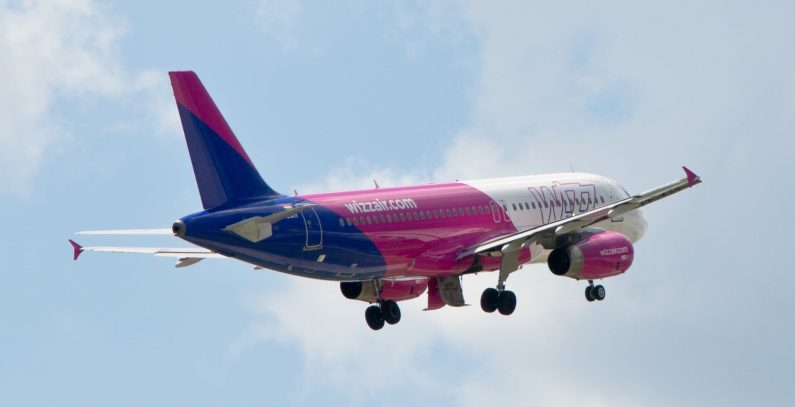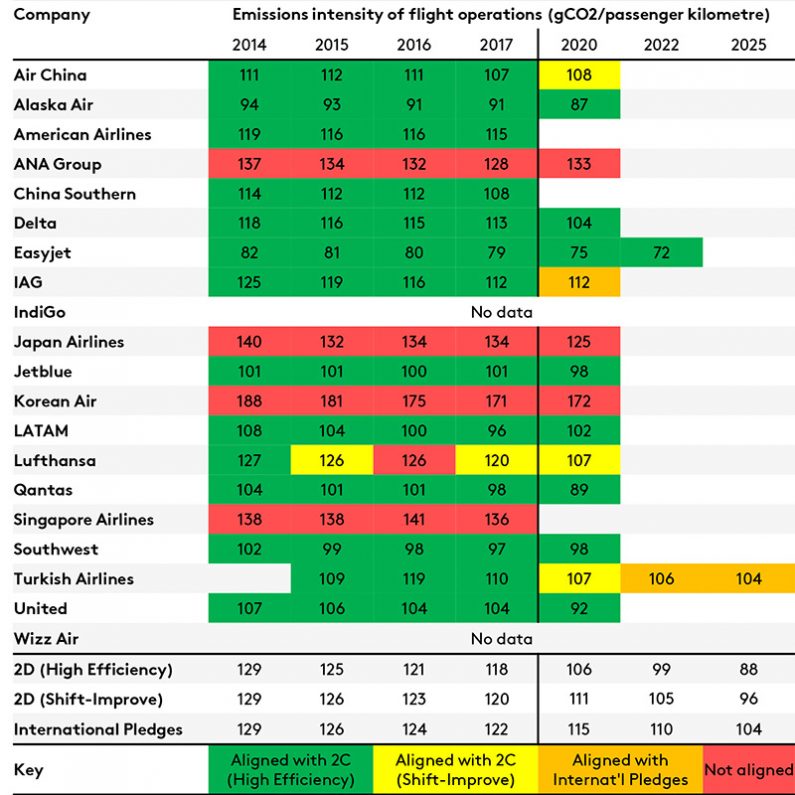
Photo: Wizz Air
Wizz Air has announced it operates at the lowest CO2 emissions per passenger among all airlines in the European Union, amid growing rumors the EU is considering the introduction of a new CO2 tax to curb aviation emissions.
With 56.5g CO2 per passenger/km in May 2019 Wizz Air is the airline with the smallest environmental footprint per passenger, the low-cost carrier said in a press release.
The airline ascribes this to a young fleet of Airbus A320, A321CEO, and A321NEO aircraft. It expects to further reduce CO2 emissions per passenger by a third by 2030.

Direct emissions from aviation account for about 3% of the EU’s total greenhouse gas emissions and more than 2% of global emissions, according to the European Commission’s data.
“Someone flying from London to New York and back generates roughly the same level of emissions as the average person in the EU does by heating their home for a whole year,” the European Commission states on its website.
The aviation sector in the EU is already in the bloc’s Emissions Trading System (ETS), but the introduction of a new CO2 tax is increasingly rumored as part of efforts to curb the aviation’s growing contribution to the climate crisis.
According to a European Commission study leaked to the press, a tax of EUR 330 per 1,000 liters of kerosene would result in a ticket price increase of 10% and an 11% decrease in passenger numbers, which would reduce CO2 emissions by 11%, or around 16.4 million tonnes, according to reports. The move would affect aviation jobs, but not overall employment, according to the leaked study.
A new CO2 tax is increasingly rumored amid the aviation’s growing contribution to the climate crisis
By 2020, global international aviation emissions are projected to be around 70% higher than in 2005 and the International Civil Aviation Organization (ICAO) forecasts that by 2050 they could grow by a further 300%-700%.
In October 2016, the ICAO agreed on a resolution for a global market-based measure to address CO2 emissions from international aviation as of 2021. The Carbon Offsetting and Reduction Scheme for International Aviation (CORSIA), aims to stabilize CO2 emissions at 2020 levels by requiring airlines to offset the growth of their emissions after 2020.
Airlines will be required to monitor emissions on all international routes and offset emissions from routes included in the scheme by purchasing eligible emission units generated by projects that reduce emissions in other sectors, such as the renewable energy projects.
Major airlines have no clear targets for reducing emissions after 2025 – research
According to recent research of the corporate disclosures of 20 of the world’s largest listed airlines, none of the airlines has a target that clearly specifies how it will reduce its own flight emissions after 2025.
The research, unveiled in March 2019, was carried out by the Transition Pathway Initiative (TPI) at the London School of Economics’ Grantham Research Institute, backed by “over USD 13 trillion of investors” such as the Environment Agency Pension Fund, BNP Paribas and Legal & General Investment Management.
The TPI noted that the research was conducted before Wizz Air enhanced disclosure on climate performance.
The research looked at airlines’ carbon management practices and their emissions performance. Delta, United, Lufthansa and ANA Group (Japan) are the leaders on carbon management, according to the research.
Easyjet is the only airline with a CO2 emissions intensity of flights below the 2C benchmarks after 2020.
ANA Group, Japan Airlines, Korean Air and Singapore Airlines have the highest emissions intensities currently.










Be the first one to comment on this article.